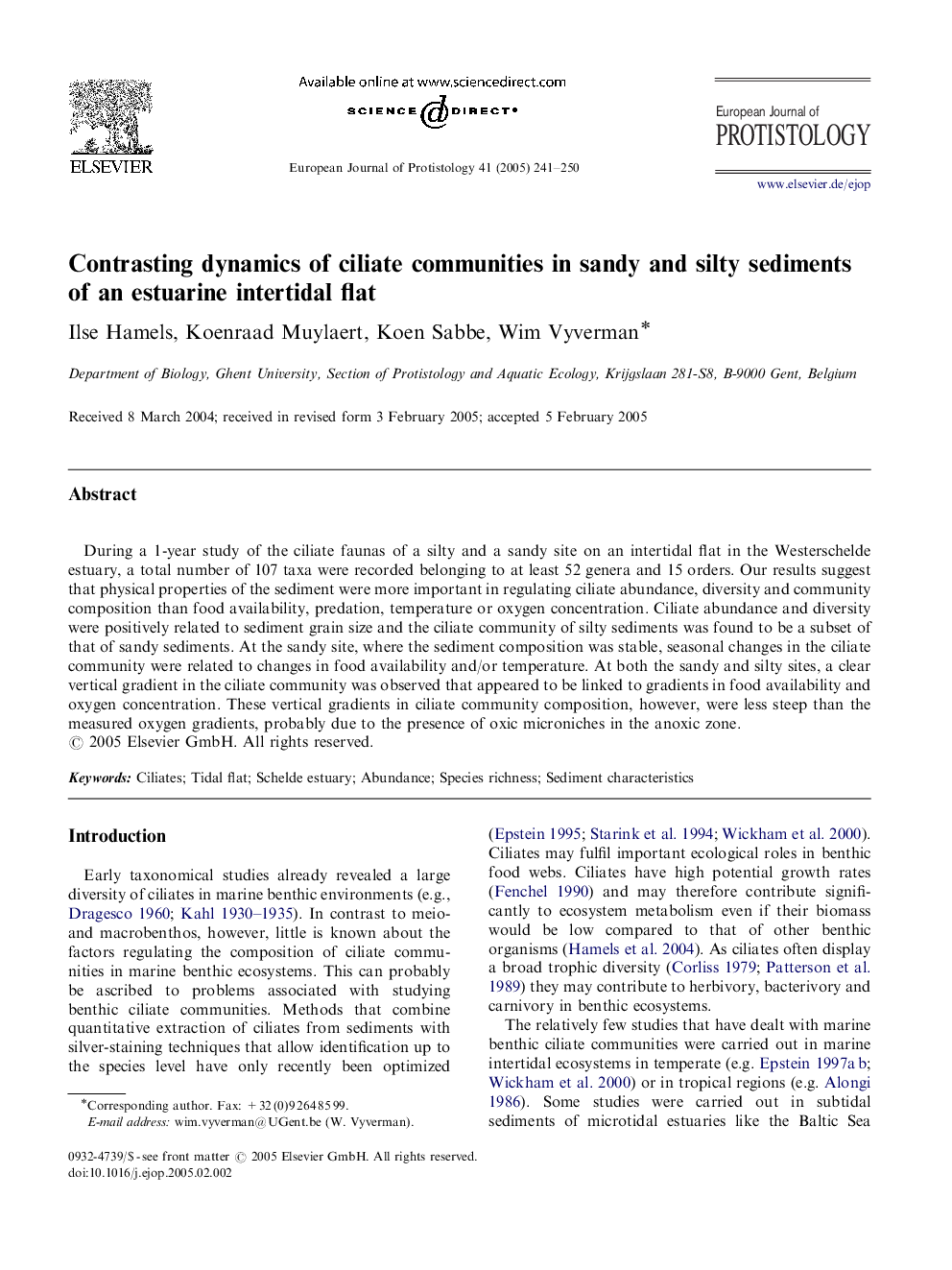| Article ID | Journal | Published Year | Pages | File Type |
|---|---|---|---|---|
| 9895481 | European Journal of Protistology | 2005 | 10 Pages |
Abstract
During a 1-year study of the ciliate faunas of a silty and a sandy site on an intertidal flat in the Westerschelde estuary, a total number of 107 taxa were recorded belonging to at least 52 genera and 15 orders. Our results suggest that physical properties of the sediment were more important in regulating ciliate abundance, diversity and community composition than food availability, predation, temperature or oxygen concentration. Ciliate abundance and diversity were positively related to sediment grain size and the ciliate community of silty sediments was found to be a subset of that of sandy sediments. At the sandy site, where the sediment composition was stable, seasonal changes in the ciliate community were related to changes in food availability and/or temperature. At both the sandy and silty sites, a clear vertical gradient in the ciliate community was observed that appeared to be linked to gradients in food availability and oxygen concentration. These vertical gradients in ciliate community composition, however, were less steep than the measured oxygen gradients, probably due to the presence of oxic microniches in the anoxic zone.
Related Topics
Life Sciences
Agricultural and Biological Sciences
Agricultural and Biological Sciences (General)
Authors
Ilse Hamels, Koenraad Muylaert, Koen Sabbe, Wim Vyverman,
